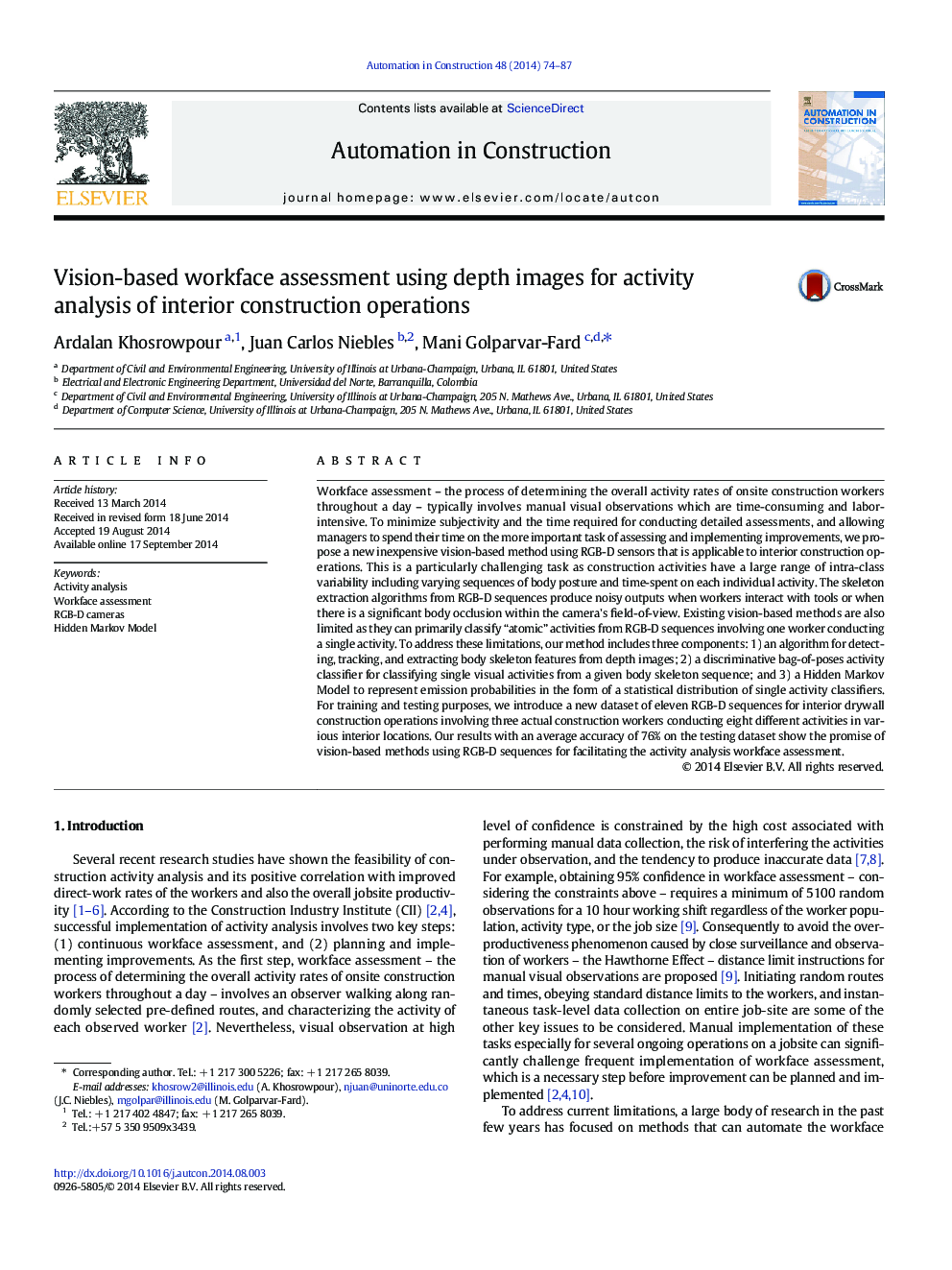| Article ID | Journal | Published Year | Pages | File Type |
|---|---|---|---|---|
| 246450 | Automation in Construction | 2014 | 14 Pages |
•A method to predict worker activities from long sequences of depth images.•The method provides activity crew-balance charts for up to six workers per sensor.•A new RGB-D dataset of drywall activities with ground truth is introduced.•An Average accuracy of 76% is reported for worker activity recognition.
Workface assessment – the process of determining the overall activity rates of onsite construction workers throughout a day – typically involves manual visual observations which are time-consuming and labor-intensive. To minimize subjectivity and the time required for conducting detailed assessments, and allowing managers to spend their time on the more important task of assessing and implementing improvements, we propose a new inexpensive vision-based method using RGB-D sensors that is applicable to interior construction operations. This is a particularly challenging task as construction activities have a large range of intra-class variability including varying sequences of body posture and time-spent on each individual activity. The skeleton extraction algorithms from RGB-D sequences produce noisy outputs when workers interact with tools or when there is a significant body occlusion within the camera's field-of-view. Existing vision-based methods are also limited as they can primarily classify “atomic” activities from RGB-D sequences involving one worker conducting a single activity. To address these limitations, our method includes three components: 1) an algorithm for detecting, tracking, and extracting body skeleton features from depth images; 2) a discriminative bag-of-poses activity classifier for classifying single visual activities from a given body skeleton sequence; and 3) a Hidden Markov Model to represent emission probabilities in the form of a statistical distribution of single activity classifiers. For training and testing purposes, we introduce a new dataset of eleven RGB-D sequences for interior drywall construction operations involving three actual construction workers conducting eight different activities in various interior locations. Our results with an average accuracy of 76% on the testing dataset show the promise of vision-based methods using RGB-D sequences for facilitating the activity analysis workface assessment.
Graphical abstractFigure optionsDownload full-size imageDownload as PowerPoint slide
